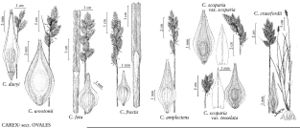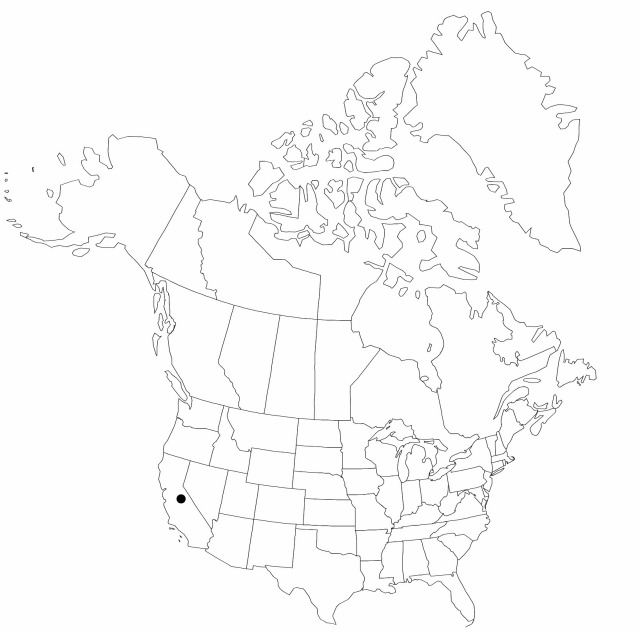Carex amplectens
Bull. Torrey Bot. Club 43: 611. 1917.
Plants densely cespitose. Culms (30–)50–90 cm. Leaves: sheaths sometimes adaxially brownish tinged, summits rounded to acute, usually prolonged to 1–5 mm beyond collar; distal ligules 1.5–4.5 mm, often shorter than sheath summits; blades (3–)4–5(–7) per fertile culm, 20–45 cm × 3–5(–6.5) mm. Inflorescences open, usually dense distally, green, silvery, or pale gold, 4–6.5 cm × 10–18 mm; proximal internode (7–)10–20 mm; 2d internode 4–8.5 mm; proximal bracts leaflike or bristlelike, if leaflike then much longer than inflorescence, base usually surrounding culm. Spikes (6–)10–20, distant, distinct, obovoid, or sometimes lanceoloid to ovoid, (12–)14–17 × 5–8 mm, base usually attenuate, apex rounded or acute. Pistillate scales white-hyaline with conspicuous green midstripe, sometimes tinged pale gold, ovate, 3.5–5.5 mm, shorter and narrower than or ± equaling perigynia, base curved around perigynia, apex acute to awned. Perigynia appressed-ascending to ascending-spreading, whitish green to pale gold, conspicuously (6–)8–11-veined abaxially, conspicuously or, occasionally, faintly 4–8-veined adaxially, veins more than 2/3 achene length, at least 3 adaxial veins longer than achene, ovate, plano-convex, (3.5–)4–5.2 × 1.5–1.8 mm, 0.6–0.8 mm thick, margin flat, including wing 0.15–0.3(–0.4) mm wide, usually curved toward adaxial surface of perigynia, ciliate-serrulate at least distally; beak green, gold, or white at tip, flat, ± ciliate-serrulate, abaxial suture inconspicuous, distance from beak tip to achene (1.8–)2–3 mm. Achenes ovate, elliptic, oblong or obovate, 1.8–2 × 1.1–1.3 mm, 0.6–0.7 mm thick.
Phenology: Fruiting mid–late summer.
Habitat: Meadows, open forests, moist to dry soils
Elevation: 1200–2100 m
Discussion
Carex amplectens has characters of C. specifica and of C. fracta. It has been collected rarely across a few, scattered localities in the Cascade Mountains and the Sierra Nevada and is poorly understood.
Selected References
None.

